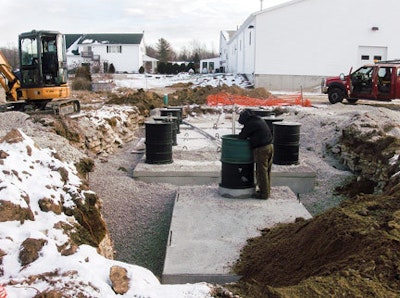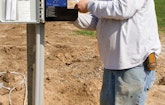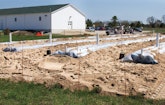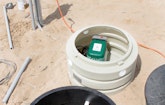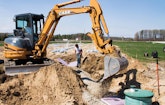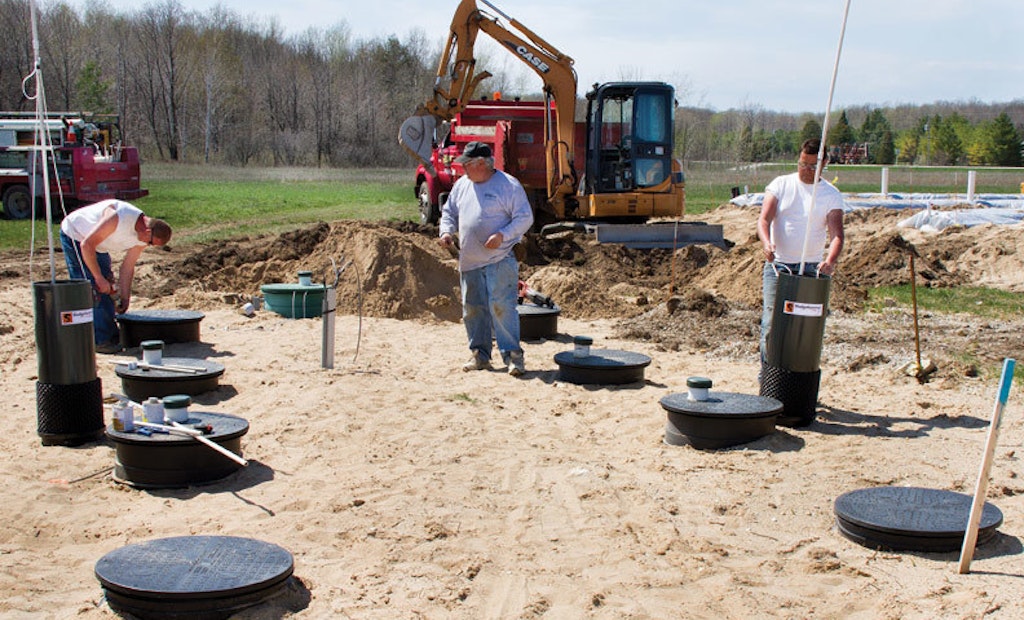Interested in Septic Tanks?
Get Septic Tanks articles, news and videos right in your inbox! Sign up now.
Septic Tanks + Get AlertsWhen the owners of Door County Coffee & Tea Co. realized they had to do something with the growing wastewater flow from their business, they sought out the onsite installers who had helped them before: Doug and Loreen Fellner of Fellner Soil & Septic Service Inc. in Sturgeon Bay, Wis.
The Client
Door County Coffee & Tea Co. started as a small operation, but it has grown dramatically. The business roasts its own coffee and sells it all over the country, says Doug Fellner. It had expanded in other ways, too. There are now 24 employees, and the original coffee shop has grown to include a 62-seat restaurant, a 30- by 40-foot retail store and a large complex for roasting and distributing coffee. It is also located on a main highway in Door County, one of Wisconsin’s biggest tourist areas. That meant a new system had to be in place for the spring, summer and fall seasons when most businesses in the area generate the bulk of their annual revenue.
The business is located on an 8.5-acre parcel of land roughly square but with a chunk cut out of a corner for two other businesses. Roads run along two sides of the parcel. Fellner Soil & Septic had already helped by separating the holding tank, which had been shared by Door County Coffee & Tea and the neighboring building.
The problem that needed solving was handling an ever-increasing amount of wastewater.
For many years, the business met its needs with a very large holding tank. But as the volume of wastewater increased that solution became less and less viable and much more costly. At peak flows, a local pumping contractor emptied the 8,000-gallon holding tank about once a week, Fellner says. Not all of that was wastewater. The holding tank was old and leaky, and groundwater easily infiltrated.
The challenge was to give the business owners an economical solution for the projected flow of 1,879 gpd. The system proposed by designer Dan Vander Leest, of Vander Leest Soil Testing in Sturgeon Bay, was a series of treatment tanks emptying into a compact, above-ground distribution system that would be housed on the extra acreage the owners had acquired behind their building.
Cheaper And Better
The Fellners and Vander Leest sat down with business owners Vicki and Doug Wilson and went through the numbers to demonstrate that the new system, although expensive, would pay for itself in just a few years compared to the cost for a new, larger holding tank and required pumping. The owners would also save money because construction of the compact mound system was cheaper than the traditional mound alternative, Doug Fellner says.
The problem in this case was not the soil. “We have about a foot of bedrock,” Fellner says.
A traditional mound system would have created a large and unsightly hill in the open and relatively flat field behind the business. So the design uses a modified mound: only about 3.4 feet above grade.
System Details
From the business, wastewater flows into a 3,000-gallon septic tank. Then it flows into a 3,000-gallon aerated treatment tank, and from there into a second 3,000-gallon aerated treatment tank. The aerated tanks are equipped with six SludgeHammer S-86 units, three per tank, supplied by Wisconsin distributor Chris Fellner, (the Fellners’ son) of Advanced Soil and Wastewater LLC of Sturgeon Bay. The aeration is accomplished using Hiblow pumps.
After pretreatment, wastewater flows into a 3,000-gallon settling tank, and then into a 5,000-gallon dosing tank. From there a pair of Goulds 3885 WEO 7H pumps send wastewater through a 2-inch force main and into 2-inch-diameter manifolds that feed 1.25-inch laterals. In total the mound consists of four, 100-foot cells built with EZFlow drainfield media from Infiltrator Systems Inc. Below each cell is 1.4 feet of mound sand, and the entire system is covered with 12 inches of topsoil. With pretreatment of the effluent, the sand can be loaded to 3,200 gpd. Dosing is timed and controlled by a 1FS panel from SJE-Rhombus. The system is designed to reduce BOD to less than 30 mg/L.
The force main is not only covered but is also insulated as is the collection pipe delivering waste from the business. “People say, ‘Why are you insulating?’ This is Wisconsin. We insulate everything,” Fellner says. So on top of the force mains are two layers of 1-inch R-5 Foamular 150 boards (Owens Corning).
To keep the system working, the SJE-Rhombus panel is tied into three floats. There is a low-water float to shut down the system, a middle float that tells the computer to start the regular dosing cycle and a top float that trips an alarm light on the panel box if the pumps fail. Because the panel is a couple of hundred feet from the back of the building, Fellner connected the high-water alarm from the old holding tank back into the system. It rings inside the building, so spotting an emergency will not depend on whether an employee notices a blinking alarm light way out in back.
Construction Scheduling
The system for Door County Coffee & Tea Co. was done in two phases. That was a help to the owner because it spread the project over two fiscal years, Fellner says. In the fall of 2012, Fellner and his crew installed all the new tanks. All of the tanks except the dosing tank were made by Premier Concrete Inc. The dosing tank was from Wieser Concrete.
Through the winter the system operated as a large-capacity holding tank. Even though that is a slower season, judge the reduction in infiltration by this: Pumpers picked up about 5,000 gallons once a week.
When spring came, Fellner and his crew were on a deadline. With the Memorial Day weekend comes the traditional start of the summer tourist season and the need to have the system finished, connected, tested and ready to work. Mother Nature had a different view. A cold and late spring punctuated with snow showers and regular rain pushed back the date when Fellner could get into the field. He scheduled the job as an early one, and in the end he made it happen. During the second week of May, he and the crew built the mound, installed the treatment units and air pumps, wired the controls and tested the entire system.
With a designed flow of 2,819 gpd and total tankage of about 18,000 gallons, Door County Coffee & Tea Co. now has a modern, efficient wastewater system that can accommodate many more years of growth.
More Information
Goulds Water Technology - a Xylem Brand - 866/325-4210 - www.gouldswatertechnology.com
Infiltrator Systems, Inc. - 800/221-4436 - www.infiltratorsystems.com
Owens Corning - 800/438-7465 - www.foamular.com
SJE-Rhombus - 888/342-5753 - www.sjerhombus.com
SludgeHammer Group, Ltd. - 800/426-3349 - www.sludgehammer.net
Wieser Concrete Products, Inc. - 800/325-8456 - www.wieserconcrete.com
